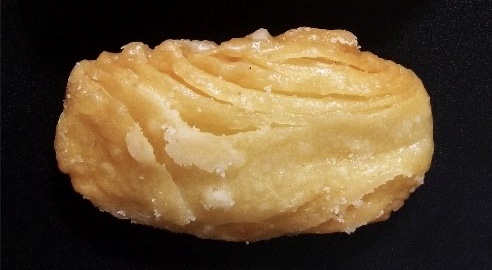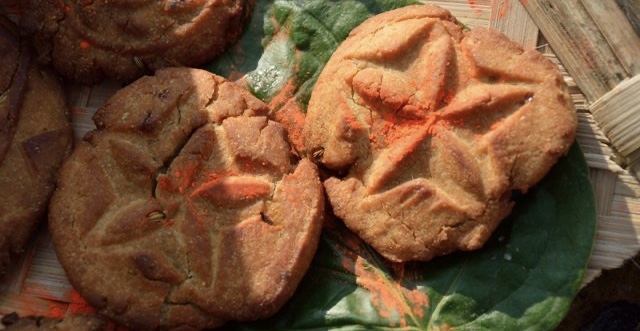I am starting this thread for everyone to know about diverse features of Incredible India. It is said that India is diverse because historically different regions of India have been living completely isolated from one another, and evolved to become entirely unique.
Here we can contribute and let everyone know about our respective States.
We can do it according to topics in syllabus, e.g., first Art & Culture of State, then History of state, then social structure, geographical features, tourist attractions, political situation, unique civil society efforts, schemes, various social indicators, economic structure, industries, ecological efforts, biodiversity, security challenges, case studies for ethics from the State, etc.
And if possible, we can give headings like "State/Topic", for instance, if I want to talk about Art and Culture of Bihar, then I will give heading "Bihar/ Art & Culture".
#Unity_in_diversity
#Incredible_India
Kerela / Art forms
1. Kathakali
Kathakali is aclassical Indian dance formand also the most elaborate costuming from Kerala
2. Mohiniyattam
Mohiniyattam is another most famousclassical danceform from Kerala, performedby women as a solo dancewith extensive training.Mohini is the female avatar of the Hindu god Vishnuand involves various rhythms.
3. Theyyam
Theyyam is aritual art formpopular in north Kerala in Malabar region. The performers of Theyyam generally performed in front of the village shrine with dancer along with the drummers
4. Padayani
Padayani is aceremonial and traditional folk danceand aritual artperformed in Bhagavati temples of Kerala.
5. Thullal
Ottan Thullal is adance performanceform of Kerala withgreen makeup and a colorful costume. Ottan Thullal, Kolam Thullal and Sarpam Thullal are three most exotic and spectacular ritual performance from the state of Kerala.
6. Onapottan
Onapottan is atraditional Kerala art formcelebrated duringOnam seasonspecially in North Malabar. A folk character with painted face and crown showcases every day during the festival.
7. Pulikalli
Puli Kali is afolk artperformed during the annual harvest festival of onam to entertain peopleand to create awareness.Puli means Tigerand Puli Kali is the play of the tigers on the theme of tiger hunting, practiced in Thrissur district of Kerala.
8. Koodiyattam
Koodiyattam is atheater performed arta Masterpiece of the Oral and Intangible Heritage of Humanity, recognized by UNESCO. The Sanskrit drama of Kutiyattam presented in the traditional style in temple theaters of Kerala with musical instruments.
9. Thirayattam
Thirayattam is aritual performing artfrom South Malabar region of the state in Kozhikode and Malappuram district. This Ethnic art form performed byPerumannan, Panan and Cherumar communities.
10. Kummattikali
Kummatti Kali is the mostcolorful mask danceseen during Onam festival in Thrissur and Palakkad district of Kerala. The dancers cover their body with grass and the theme is mostly taken from thestories of Ramayana.
11. Chakyar Koothu
Chakyar Koothu is astory and performance art, traditionally been performed only by the Chakyar community.The traditional dance form is one of the oldest classical arts of Kerala and performed in the temples.
12. Kalaripayattu
Kalaripayattu is abattlefield and combat art form, originated in Kerala and practiced in northern and central parts of the state. It isone of the oldest surviving fighting systemsin the world and famous for itsattacking and defensive patterns
Uttarakhand / Paintings
The development of the Garhwal school of painting as a branch of the Pahari school of art is believed to have started in the 17th century and reached its zenith in the latter half of the 18th and first half of the 19th centuries. The chief pioneer behind this growth was the eminent Garhwali painter, poet and historianMola Ram.
In the 17th century, the Mughal Prince Suleman Shikoh had taken refuge in Garhwal. He was accompanied by a few artists well versed in the Mughal style of miniature paintings. When he returned he left behind Shamdas and Haridas, who had already mastered the new painting techniques. These two were the ancestors of Mola Ram.
The Pahari Painting is inspired by the battles between good and evil. It has covered vast subjects like Indian life; its history, culture and traditions, with a touch of divinity. There is a lot of subtle spiritual content in the art, literature and mythology that has survived for generations in the Indian sub-continent. The Pahari Kalam style of painting was developed in the Kumaon area and was practiced in some of the Himalayan regions.
Aipan or Alpanais a popular Kumaoni art form done on walls, paper and pieces of cloth. This decorative art includes drawings of various geometric and other figures representing gods, goddesses and objects of nature. The pichhauras or dupattas are also decorated in this way. These ritual designs and patterns are an expression of a women’s artistic taste.

Aipan Painting
Barboond, Patta, Rangwalietc. are some more forms of local ritual paintings to be done on specific occasions.
Besides these some spots like Lakhudiyar, Falseema, Kasardevi in Kumaon and Dungri in garhwal have traces of ancient rock paintings and engravings.
Bihar/ Cuisine







Dear@Agog
I appeared at around 6th century AD. Chirand was far earlier than me! :P
Bihar/ History
Historical places:
- Bodh Gaya:Gautama attained Enlightenment here
- Rajgir:Buddha taught the Perfection of Wisdom and subdued an angry elephant through his compassion.
- Vaishali:Buddha ordained the first female nuns and this is also the place where he received an offering of honey from a monkey.
- Sahasram, Barabar Caves:Minor Rock Edicts of Ashoka are here
- Lauriya-Araraj, Lauriya-Navandgarh:Major Pillar Edicts of Ashoka are here
- Takht Sri Patna Sahib:Birthplace of Guru Gobind Singh
- Nalanda University and Vikramshila University:2 most important centers of learning in Ancient India
- Vajji:It covered the modern North Bihar. It is indicated to have been a republic.
- Magadha:It covered South-western Bihar
- Anga:It covered South-eastern Bihar
- Buxar:Place where the Battle of Buxar took place in 1764.
Would also add:
Chirand: Near Chapra, Saran district. An archaeological site in Bihar with continuous records from Neolithic period to the reign of Pal dynasty in pre- medieval period.
Uttarakhand / Dance
Chhura
dance is very popular among the people and is in a way of an old experienced man teaching a young Shepherd the tricks of his trade. Both men and women participate in this dance.
Chapeli -
It is a very famous and fast dance of Kumaun. The theme of the dance is love and it is very romantic. Both men and women participate in this dance and the costume is very colourful.
Jhodha
dance is the most famous folk dance of Kumaon. People belonging to different caste or creed, perform this dance, irrespective of any discrimination, in almost all festivals.
Chanchi
is also one of the famous folk dance of Kumaon. It takes place only in fairs. Mostly this dance is based on religious songs, something related to nature etc.
Cholia is one of the famous folk dance of Kumaon which is as old as 1000 years. Swords are being used by dancers in this dance.
Bihar/ History
Historical places:
- Bodh Gaya:Gautama attained Enlightenment here
- Rajgir:Buddha taught the Perfection of Wisdom and subdued an angry elephant through his compassion.
- Vaishali:Buddha ordained the first female nuns and this is also the place where he received an offering of honey from a monkey.
- Sahasram, Barabar Caves:Minor Rock Edicts of Ashoka are here
- Lauriya-Araraj, Lauriya-Navandgarh:Major Pillar Edicts of Ashoka are here
- Takht Sri Patna Sahib:Birthplace of Guru Gobind Singh
- Nalanda University and Vikramshila University:2 most important centers of learning in Ancient India
- Vajji:It covered the modern North Bihar. It is indicated to have been a republic.
- Magadha:It covered South-western Bihar
- Anga:It covered South-eastern Bihar
- Buxar:Place where the Battle of Buxar took place in 1764.
GI tags/ India
1.Sohrai Khovar paintingis a traditional and ritualistic mural art being practised by local tribal women in the area of Hazaribagh district ofJharkhand.

2. Chak-Hao, the scented glutinous rice which has been in cultivation inManipurover centuries.

3. Theterracotta workofGorakhpuris a centuries-old traditional art form, where the potters make various animal figures like, horses, elephants, camel, goat, ox, etc. with hand-applied ornamentation.

4.Kovilpatti kadalai mittai is a candy made of peanuts held together with glistening syrup, and topped with wisps of grated coconut dyed pink, green and yellow. It is manufactured in Kovilpatti and adjacent towns and villages in Thoothukudi district inTamil Nadu

5.Two well-known products fromTamil Nadu—Dindigul lock and Kandangi Saree given GI Tag.

6. Tirur betel vinefromKeralais mainly cultivated in Tirur, Tanur, Tirurangadi, Kuttippuram, Malappuram and Vengara block panchayaths of Malappuram District.
- It is valued both for its mild stimulant action and medicinal properties.
Silk Production / India
There are five major types of silk of commercial importance, obtained from different species of silkworms. These areMulberry,Oak Tasar&Tropical Tasar,MugaandEri.
Except mulberry, other non-mulberry varieties of silks are wild silks, known asvanya silks.
India has the unique distinction of producing all these commercial varieties of silk.
South India is the leading silk producing area of the country and is also known for its famous silk weaving enclaves like Kancheepuram, Dharmavaram etc.












